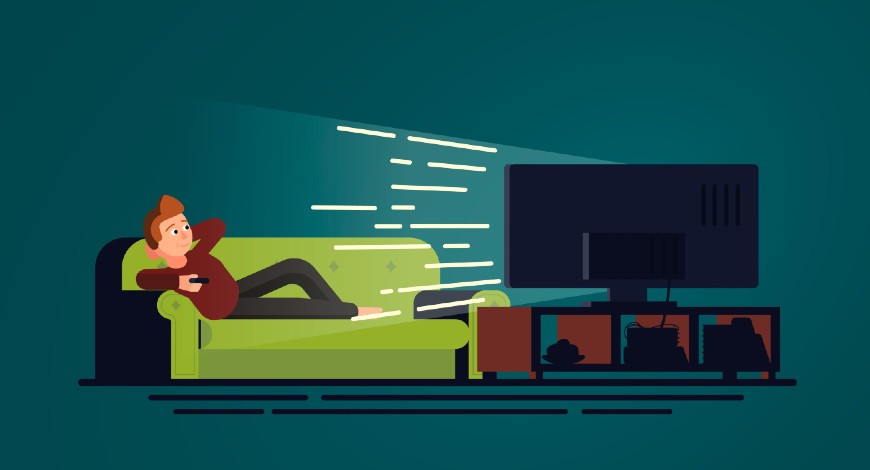Trends
Why speed-watching is the new binge-watching

“The way I consume content has fundamentally changed with everything being consumed at a minimum of 1.5x,” wrote Shashank Udupa, co-founder of community platform, Avalon Scenes, on Twitter and Instagram a few weeks ago. It resonated with over 15,000 users who ‘liked’ his post across the two social media platforms. Several social media posts from the last few months mirror this sentiment.
Speed-listening and speed-watching have caught on among online users eager to absorb more of the ever-growing pile of content in less time. ‘Speed’ is the next big step in customizing content consumption, says behavioural scientist Anand Damani. “After customizing what to watch and when to watch, now more and more it’ll be about how fast or slow we can watch something.”
All major platforms, such as YouTube, Netflix, WhatsApp and Spotify, are aligning to meet this change in consumption patterns by introducing different speed controls for their apps across smartphones, laptops and smart TV screens. Over the past year, they’ve introduced controls that allow users to speed up content by as much as 2x or slow it down by 0.75x. The companies also make the case for slower and faster speed controls benefiting people with hearing and visual impairment, respectively. Learning apps such as Duolingo and Coursera have introduced playback speed controls, too.
On Spotify podcasts, the most commonly used speed, apart from normal, is 1.2x, says a company spokesperson. Globally, topics such as business, news, and education over-index at faster than regular playback speeds on the audio-streaming platform.
Among learners who choose to adjust their playback speeds on Coursera, 1.25x is the most prevalent, says Shravan Goli, chief product officer at the open online course provider company.
Atulaa Krishnamurthy consumes all podcasts and YouTube videos at 1.25x, “especially if the content features foreign creators as they tend to speak slower than Indians speaking in English”, says the fintech lawyer from Bengaluru. Over a year ago, she discovered a ‘video speed controller’ plug-in for browsers that worked across OTT platforms and allowed more granular speed controls. She started watching nearly all TV shows and movies at 1.3x speed.
Speed breaker
Like Udupa of Avalon Scenes, many have found that fast playback speed has spoilt them for regular pace. For Apeksha (surname withheld), a Mumbai-based investor/trader, listening to everything at an enhanced speed meant she started tuning out of Clubhouse and Twitter Spaces. “The (real) pace felt tedious.” Krishnamurthy has even tried speeding up live streams of weddings in recent times. “I started thinking of all fun viewing as things to finish quickly so I could do other things,” she says. She is now consciously trying not to speed up her leisure viewing as if it’s a task on her to-do list.
Rashi Kakkar, a management consultant, prefers fast playback for audio only. “With audio, it is one sense that is engaged and so you can ‘hear’ things faster and retain them. Very few people can get both senses to work at 1.5x speed and still retain stuff.”
Soren Hamby, a vision-impaired inclusive service designer from New York City metro area, has experienced sensory issues while speed-listening. “I think I’m an outlier in the low vision/blind community in that I also am neurodivergent,” Hamby explains. “This leads to me having some sensory issues including auditory processing dysfunction, which tends to make me feel completely overwhelmed when listening [to something] at higher speeds.”
One of the reasons for this is because “this feature across the board hasn’t been executed well [in terms of user-interface (UI) and user experience (UX)] with the exception of a couple of podcast apps”, says Cat Noone, CEO of Stark, a SaaS company that provides tools to make software accessible.
Meanwhile, slow-listening and watching is finding takers. One of the Duolingo courses comes with regular and slow audio. “For exercises, we see that 31% learners tap the ‘slow’ speaker,” says Michaela Kron, a company spokesperson.
Platforms such as Instagram could also benefit from adjustable playback, says Hamby. “Low vision users may need to pause or slow a video to process visual information.” Noone from Stark recommends that messaging aggregators like WhatsApp should also roll out slow playback speeds for voice notes and memos, and include transcription just like what Apple has for voicemails.
Kurt Dias, a designer working at a tech company in Bengaluru, plays YouTube videos at 0.5x speed, mainly when watching guitarists he admires. “It helps me emulate and interpret their melodies and improve my guitar skills,” says Dias who is hard of hearing in one ear.
Slower playback speed makes for easier lipreading, which adds to the comfort that subtitles provide. Accents from different geographical locations can be quite challenging for lipreaders, he says. “Slowing things down is almost always a good thing.” Live Mint






You must be logged in to post a comment Login